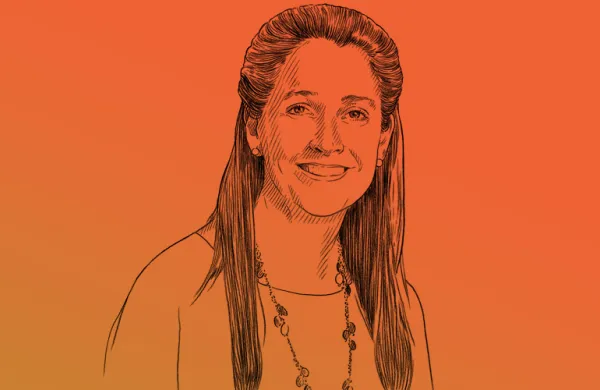Ross Margolies has had a broad career in finance. Margolies, 58, started out as a high-yield bond analyst at Lehman Brothers Holdings and joined Salomon Brothers Asset Management when it was at its peak, running a mutual fund for the firm. He went on to launch Saranac Capital Management, a Salomon spin-out, before founding New York–based Stelliam Investment Management in 2006. Stelliam, which now has $4.5 billion in assets, is a long-short and long equity manager named after his parents, Stella and William.
This past Tuesday at the Delivering Alpha conference in New York, Margolies took part in a panel discussion in which he and his fellow speakers tackled the question “What happened to alpha?” During his remarks, he argued that active managers will have to adapt to new and fundamental changes in market structure if they want to keep generating absolute returns. We caught up with Margolies backstage to learn more about how he’s responding at Stelliam.
What has changed the most over the course of your career?
I think technology has leveled the playing field. That’s why I say, You have to focus on the intermediate term when you think about creating a market view. I never like saying “long term,” because five years out is so far — Who knows what is going to happen in five years? You have to look out one to two years at most.
On the panel, you mentioned that you think indexing has fundamentally changed how stocks trade. Can you explain that?
Indexing and ETF strategies are a large percentage of the market, and they don’t care about company fundamentals. I care about fundamentals; that’s what I do. But a large part of the allocations out there now treat a company like a commodity. Over the long and the intermediate term, companies are going to act like stocks. But over the short term, a stock may act like a commodity, trading based on the flows of the moment. That’s different from what usually has happened in the past.
I think that’s a structural change to the market. If we say, for example, that half of the market is in index products, that means that in 1 out of every 2 trades, the other person isn’t looking at what I’m looking at. When I got in the business, nearly all of the people looked at fundamentals, albeit with different time horizons. I have to be aware of that change. I’m not saying I’m going to change my strategy, because that’s not what I do. Now I have to look at a stock and say, “Normally, this stock would go to 20, but it’s going to go to 15 because that’s what is going to happen in this risk environment with index products.” So I have to adapt my strategy to include stocks overshooting their fundamentals by wider margins.
Is it hard to communicate that difference to your investors? They chose you because you’re a fundamental stock picker, and now you’re trading around index products.
We spend a lot of time with that because of our need to understand the impact of the changes on the markets. So we’re doing quarterly webcasts and letters; we’re answering their calls. We’re spending a lot of time with communications that help them understand what we’re doing and how it’s different, so that way they can make their own judgment about what to do.
Also, when we notice something different about the market, we tell them about it, so they can incorporate it into their decisions. The important thing is that they have all the information. At different times in the market, different issues arise. I have an expression: There’s a 100-year flood somewhere every year. That’s what you have to deal with in the markets.
You’ve worked in the mutual fund/retail space. What would you say to investors who are in index products because that is what is available to them? Are there smarter ways to think about using such products?
I think those investors should be indexed, unless they have a good reason to understand what active managers are doing. If you look at an institutional allocator who knows managers inside and out, they should only go to indexing when they don’t have a better alternative. But for regular people, they should have a large allocation to indexing, because they aren’t going to have the resources to figure out which managers do well and how to evaluate if they are sticking to their strategy.
But when they do find one that they think is good and invest with them, they shouldn’t try to time it. They should just stick with it as long as they have confirming information. If your manager is communicating their strategy in a way that is consistent with what you want in your portfolio, stick with it. Don’t try to move in and out and then try to find a few more managers if you can. If you can’t [find a manager], then just index. I’m not against indexing. But we all have to understand that the shift to indexed and passive products has changed the market and the way stocks trade. So I, as an active manager, have to learn how to live in that market.
You’ve said that the presence of machines in the market today tends to compete away almost all of the short-term opportunities, which is why you focus one to two years out. Can you talk about that and where you see opportunities?
I’ve always focused one to two years out, but I think it’s more important now because of how the market works and the ability of computer-driven strategies to move quickly and move the markets. The reason why I go one to two years out is because it’s a reasonable enough time frame to put together a good forecast of what’s going to happen, but not so far out that you’re just guessing. If you’re looking five to ten years out, how many recessions are you going to have over the next five to ten years? I don’t know. But one to two years out, I can put together a view in response to the world now.
I think the people focused on the next quarter are getting outcompeted by the machines. Machines can read short-term data and react quickly. They’re taking in all of these data points and historical patterns that make things move short term, and they’re trading at a percent or a fraction of a percent. A human can’t do that. I’m willing to give up a couple percent to have enough time to make up my mind, as I’m trying to make a long-term compound return.
The people who are focused on the day to day, month to month, quarter to quarter are going to have to get over it if they want to make money. If that’s how you want to focus, you should just put your money in an index and tuck it away. You can take a look at implied volatility in the options market right before events such as earnings reports; on average, they are pretty close to predicting the outcome. The machines are capturing that.
Over my time horizon, I think there are both long and short ideas in energy. I think the airlines are going to do very well over the next couple of years. I also think interest rates have to go up. If rates go up, utilities, communications and consumer staples are all going to do poorly. Those are all areas that are being artificially inflated by low rates, and they’re going to get smushed. “Smushed” is the technical term.






